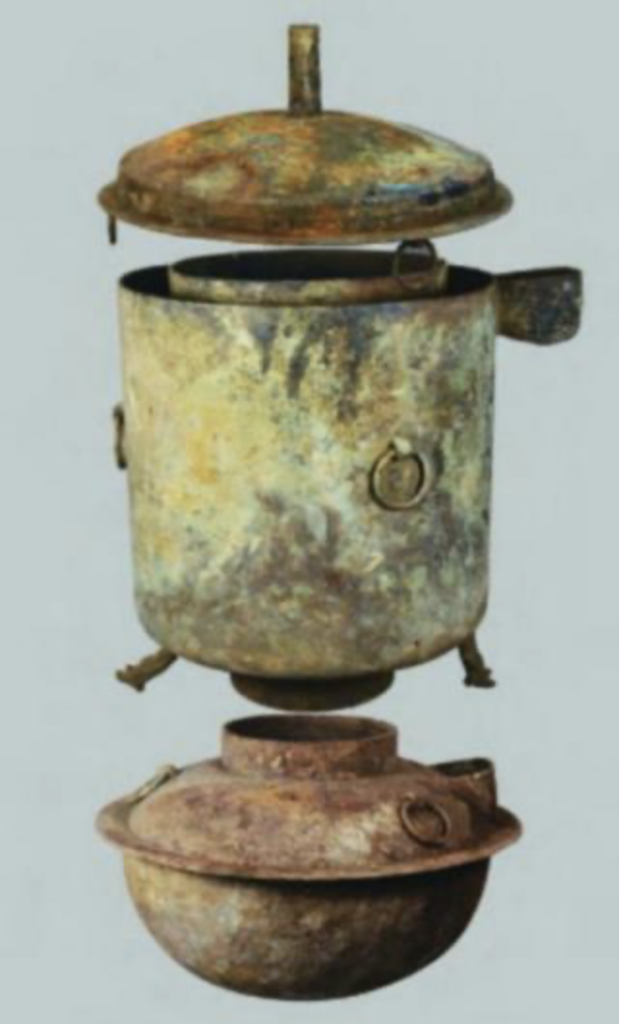http://j.people.com.cn/n3/2024/1024/c95952-20233437.html
A research team from the Center for Historical and Cultural Heritage Protection and Research at Zhengzhou University has replicated and simulated a still excavated from the Haihunhou Tomb of the Western Han Dynasty (206 BC-8 AD), proving that the technology to distill alcohol existed at the time. This has pushed the feasibility of Chinese distilled alcohol technology back 1,000 years. Xinhua News Agency reported.
A bronze still consisting of three parts, a “pan,” a “cylindrical vessel,” and a “kettle,” was excavated from the wine vessel warehouse of the Haihunhou Tomb in Nanchang, Jiangxi Province. There have been various views in the academic community on how it was used and what it was used for. The still can be used to produce distilled liquor, and can also be used to distill and refine cinnabar and liquor. Based on the shape and base of the vessel and the reaction conditions of the raw materials, the possibility of distilling cinnabar and liquor was ruled out. By combining the location where the vessel was excavated, information on the residue, the status of the tomb’s owner and the structure and design of the vessel, the device was replicated and experiments with various raw materials provided sufficient experimental data to confirm that this is an early liquor distillation device.
The distillation efficiency was over 70%. The still unearthed from the Haihunhou Tomb meets all the requirements for producing distilled liquor in terms of size, structure, usage, and operation. It not only guarantees distillation efficiency and production volume, but also ensures the taste and alcohol content of the liquor.

